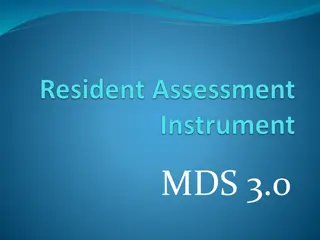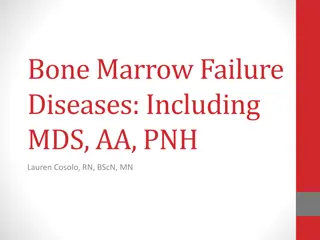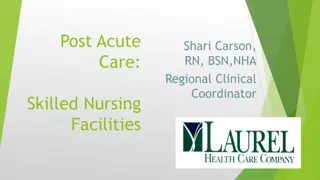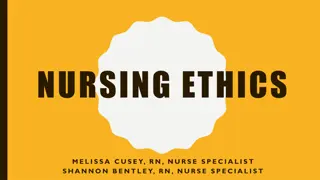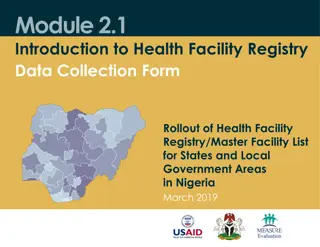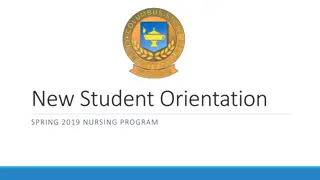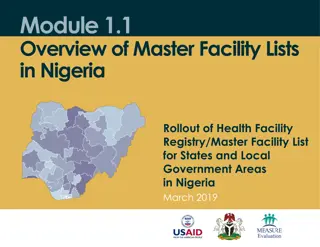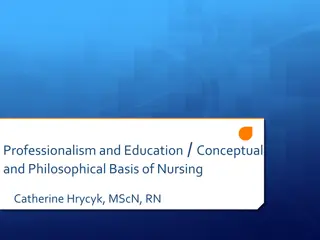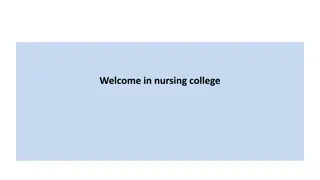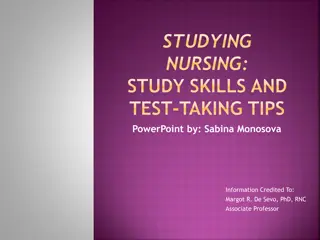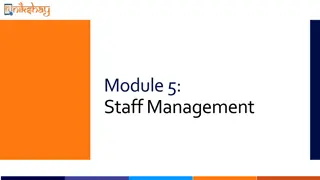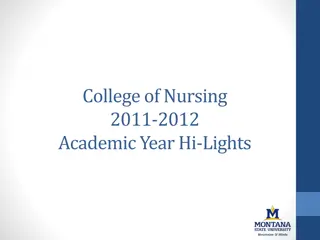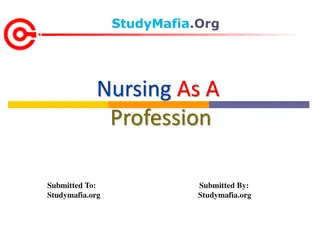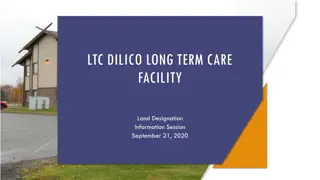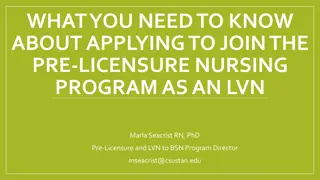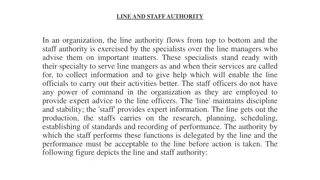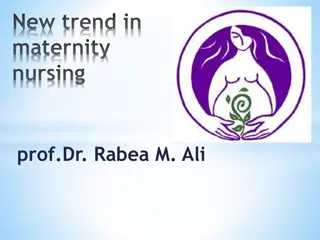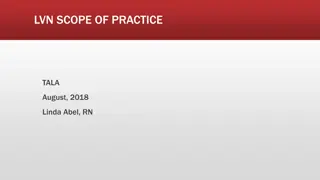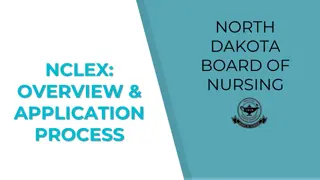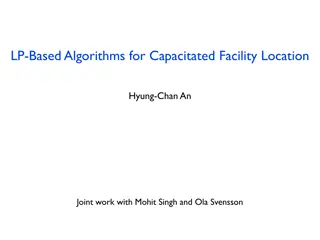Comprehensive Guide to MDS 3.0 and RAI Manual for Nursing Facility Staff
Complete manual providing detailed chapters on MDS 3.0 assessment, RAI process, care planning, submission procedures, and Skilled Nursing Facility PPS. Includes information on item-by-item guides, CAAs, and valuable resources to aid in accurate coding and care plan development. Access the manual for essential instructions and guidelines.
Download Presentation

Please find below an Image/Link to download the presentation.
The content on the website is provided AS IS for your information and personal use only. It may not be sold, licensed, or shared on other websites without obtaining consent from the author. Download presentation by click this link. If you encounter any issues during the download, it is possible that the publisher has removed the file from their server.
E N D
Presentation Transcript
Layout of RAI Manual Chapter 1 RAI Chapter 2 Assessments Chapter 3 Item-by-Item Guide Chapter 4 Care Area Assessment (CAA) Process and Care Planning Chapter 5 Submission and Correction Chapter 6 Skilled Prospective Payment System (PPS) You can access the manual at: http://www.cms.gov/Medicare/Quality-Initiatives-Patient-Assessment- Instruments/NursingHomeQualityInits/MDS30RAIManual.html
Chapters Chapter 1 contains important information about the content and completion of the RAI and how it serves the nursing facility staff in problem identification. There is also information about protecting the privacy of the MDS information, among other topics. Chapter 2 details scheduling, completion and submission timeframes for OBRA and PPS purposes. There are lots of definitions in this chapter and some very useful charts that outline timeframes related to scheduling, completion and submission. Chapter 3 contains directions for completing each and every MDS item. It is a must that this information be used to guide assessments; simply referring to the form (or item set) for directions will lead to inaccurate coding.
Chapters cont. Chapter 4 is titled Care Area Assessment (CAA) Process and Care Planning here you will find information about the RAI process and how the CAAs provide the critical link between the MDS and the care plan. Chapter 5 details Submission and Correction of the MDS Assessments. Chapter 6 outlines the Medicare Skilled Nursing Facility Prospective Payment System (SNF PPS) there is some overview information about SNF PPS in this chapter as well as very detailed information about the RUG-IV system.
Appendices Appendix A Glossary and Common Acronyms Appendix B SA & CMS RO RAI/MDS Contacts Appendix C Care Area Assessment (CAA) Resources Appendix D Interviewing to Increase Resident Voice Appendix E PHQ-9 Scoring Rules & Instruction for BIMS Appendix F Item Matrix Appendix G References Appendix H MDS 3.0 Item Sets
CHAPTER 1 Resident Assessment Instrument (RAI)
Overview RAI helps gather information on residents strengths and needs used to develop an individualized care plan. It assists with evaluating goal achievement, revising care plans and tracking changes in resident status. The RAI process promotes an interdisciplinary approach for holistic, resident-centered care in order to achieve the highest level of functioning possible and quality of life.
Content of RAI Three basic components: Minimum Data Set (MDS) Version 3.0 Care Area Assessment (CAA) process RAI Utilization Guidelines Utilization of the three components gives information about the resident s functional status, strengths, weaknesses and preferences.
Minimum Data Set (MDS) Core set of screening, clinical, and functional status elements that form the foundation of a comprehensive assessment for all residents of nursing homes certified for Medicare and/or Medicaid services. The MDS items standardize communication about resident problems and conditions.
Care Area Assessment (CAA) Process CAA Process Components: Care Area Triggers (CATs) identify areas present or at risk for developing specific functional problems and require further assessment. Care Area Assessment (CAAs) is further investigation of triggered areas to determine if interventions and care planning are needed. CAA Summary (Section V of the MDS 3.o) gives the location of documentation and decision making regarding the triggered care areas and care planning.
Utilization Guidelines Provide Instructions for: When and how to use the RAI Completion of the RAI Structured frameworks for understanding the MDS and other clinical information
Uses of MDS Data Primary purpose as assessment tool used to identify resident problems for development of individualized care plans. Used for the Skilled Nursing Facility (SNF) prospective payment system (PPS) for Medicare reimbursement for services provided by M/C Part A. Monitoring Quality of Care: Quality Measures Report Nursing Home Compare
Regulatory Compliance Federal regulations require: Assessment accurately reflects the resident s status A Registered Nurse conducts or coordinates each assessment with the participation of appropriate health professionals The assessment process includes direct observation and communication with the resident and direct care staff on all shifts.
Accuracy Collect information from multiple sources: Resident Direct care staff on all shifts Resident s medical record Physician Family/Guardian/Significant Other (as appropriate) Information collected should cover the same observation period specified by the MDS assessment Information should be validated for accuracy by the IDT completing the assessment
RN Coordinator and IDT Facilities granted an RN waiver must provide an RN to conduct/coordinate the assessment and sign as complete IDT includes facility staff with varied clinical backgrounds, including nursing staff and physician A team combines experience and knowledge to identify and understand resident strengths, needs and preferences used to improve quality of care and quality of life.
Facility Decides Who should participate in the assessment process How the assessment process is completed How the assessment information is documented while remaining in compliance with regulations and this manual
Documentation CMS does not require specific documentation procedures Documentation of identification and communication of residents problems, needs and strengths, that monitors conditions on on-going basis and that records treatment and response to treatment is good clinical practice and expected of trained health care professionals Completion of the MDS does not remove responsibility to document detailed assessment of relevant issues Must substantiate a resident s need for Part A SNF services and resident response
Problem Identification Process This illustrates a problem identification process from: MDS (and other assessments), CAA decision-making process, care plan development, care plan implementation evaluation
Privacy of MDS Data MDS assessment data is personal information about nursing facility residents that facilities are required to collect and keep confidential in accordance with federal law. This data is considered part of the resident s medical record and is protected from improper disclosure by Medicare and Medicaid certified facilities by regulation at CFR 483.75(l)(2)(3) and 483.75(l)(2)(4)(i)(ii)(iii), release of information from the resident s clinical record is permissible only when required by: 1. transfer to another health care institution, 2. law (both State and Federal), and/or 3. the resident.
Privacy (cont.) Nursing facility providers are also required under CFR 483.20 to transmit MDS data to a Federal data repository. Any personal data maintained and retrieved by the Federal government is subject to the requirements of the Privacy Act of 1974. The Privacy Act specifically protects the confidentiality of personal identifiable information and safeguards against its misuse. The Privacy Act requires by regulation that all individuals whose data are collected and maintained in a federal database must receive notice (see example pg. 1-16). Therefore, residents in nursing facilities must be informed that the MDS data is being collected and submitted to the national system.
Privacy (cont.) Providers who are part of multi-facility corporations may release data to their corporate office or parent company, but NOT to other providers within the multi-facility corporation.
CHAPTER 2 Assessments for the RAI
Background The Omnibus Budget Reconciliation Act (OBRA) of 1987 required the development of a Minimum Data Set (MDS) of core elements for use in assessing nursing home residents. The OBRA regulations required Medicare and/or Medicaid certified nursing homes to conduct initial and periodic assessments for all residents residing in a certified bed, regardless of the resident s source of payment.
Background (cont.) The MDS 3.0 is part of the Resident Assessment Instrument (RAI) process for the accurate assessment of nursing home residents. MDS assessments are also required for Medicare payment through the Prospective Payment System (PPS) for residents that receive services paid for through M/C Part A.
RAI Completion Responsibilities Requirements for the RAI are applicable to all residents in Medicare and /or Medicaid certified long- term care facilities regardless of the resident s age, diagnosis, length of stay, payment source or payer source. RAI is not applicable to persons residing in non- certified units or long-term care facilities or licensed only facilities.
RAI Must Be Completed for: All residents of Medicare SNFs or Medicaid NFs. Hospice Residents when the SNF or NF is the hospice patient s residence. Short-term or respite residents for any person residing more than 14 days on a unit of a certified LTC facility. If the resident is in a certified bed, must complete OBRA required assessments and tracking documents. If fewer than 14 days, an OBRA admission assessment is not required, but entry tracking and discharge assessment is required. Required for all residing in a certified bed regardless of age or diagnosis.
RAI and Certification Situations Newly Certified Nursing Homes Must admit residents and operate in compliance with certification before a certification survey OBRA assessments are completed prior to certification Certification survey completed to verify substantial compliance and facility certified last day of the survey For OBRA assessments, schedule determined by date of admission. If an admission assessment is completed prior to certification, there is no need to do another Adm. Assess. Continue the OBRA schedule and use actual admission date as Day 1. Medicare cannot be billed for any services provided prior to the certification date. Use certification date as Day 1 for the covered Part A stay to set ARD for PPS assessments.
Adding Certified Beds Procedure for adding beds is different from initial certification. Medicare/Medicaid residents should not be placed in a bed until the facility has been notified that the bed is certified.
Change in Ownership Two Types: New owner assumes assets and liabilities and maintains the existing provider number Assessment schedule for existing residents continues New owner does not assume assets and liabilities and does not keep existing provider number Beds are no longer certified No links to previous provider D/C return not anticipated assessments completed on all residents by the previous owner New owner completes Entry Tracking record and Admission Assessment for all resident Compliance with OBRA expected at time of certification survey
Resident Transfers Transferring facility must provide the new facility with necessary medical records (including MDS) to support continuity of care. Admitting facility must complete Admission assessment within 14 days (even if receiving from a NH in the same chain). OBRA and PPS schedules start with the new admission For transfer of resident d/t a natural disaster with anticipated return, the evacuating facility should contact their Regional Office, State Agency and MAC/FI for guidance. With disaster and resident return not anticipated (RNA), evacuating NH will D/C RNA and receiving facility will admit and begin MDS cycle.
Reproducing and Maintaining Maintain all resident assessments completed in the previous 15 months in the resident s active clinical record. 15 month period does not restart with each readmission After 15 months the RAI may be thinned and stored in medical records dept. but must be easily retrievable. Exception: Demographic information from the most recent Admission Assessment must be maintained in active record. Electronic signatures may be used for clinical documentation, including MDS when permitted by State and local law and facility policy Clinical record may be maintained electronically rather than in hard copy, including portions of the record such as MDS. Does not required the entire record be electronic or the use of electronic signatures.
Reproducing and Maintaining (cont.) If MDS maintained electronically without electronic signatures, must maintain signed and dated hard copies of: CAAs completion, correction completion and assessment completion data in the active clinical record. Must ensure proper security for privacy and integrity of the record Clinical records must be maintained in a centralized location according to P & P Clinical records must be easily and readily accessible to: Staff, State agencies (including surveyors), CMS and other authorized persons.
Assessment Reference Date (ARD A2300) The ARD (A2300) is the last day of the observation or look- back period for the assessment. The ARD begins at 12:01 a.m. on the first day of the observation period and ends at 11:59 p.m. on the ARD. The ARD of an assessment drives the due date of the next assessment. The facility is required to set the ARD on the MDS or in the software within the required timeframe of the assessment type being completed.
Observation Period (Look-Back) 7 day Observation period (Look-Back) ARD + 6 previous calendar days 14 day Observation period (Look-Back) ARD + 13 previous calendar days Most of the MDS sections have a 7 day look-back period. The requirement for the look-back period will be listed with each section. If the section does not document a time designation for the look-back period, then it is 7 days.
Assessment Timing Timing for conducting assessments is based on the ARD (A2300) OBRA required Admission assessment ARD must be no later than the 14th calendar day of the resident s admission (admission date (A1600) + 13 calendar days). OBRA required Quarterly assessment ARD must be set within 92 days after the ARD of the previous assessment (A2300 + 92 calendar days). OBRA required Annual assessment ARD must be set within 366 days after the ARD of the previous comprehensive assessment (A2300 + 366 calendar days).
Timing (cont.) OBRA required assessments may be scheduled early if the facility wants to stagger assessment due dates. At a minimum, there must be three quarterly assessments in a 12-month period, but more than three quarterly assessments may be completed in a given year or the annual may be completed early to ensure regulatory time frames between assessments are met. The completion of a Significant Change of Status Assessment (SCSA) or Significant Correction to Prior Assessment (SCPA) will reset the assessment schedule with the next quarterly assessment due within 92 days after the SCSA or SCPA assessment reference date (ARD).
Assessment Completion The assessment completion date is when all the information needed has been collected, recorded and staff have signed and dated that the assessment is complete. An OBRA required comprehensive assessment is complete when the MDS items and CAA process are complete. This means the RN assessment coordinator has signed and dated the MDS at Z0500B and the CAAs at V0200B2 for the completion attestations. Non-comprehensive and Discharge assessments are complete when the RN coordinator signs and dates the completion attestation for the MDS only at Z0500.
Types of Assessments OBRA (Omnibus Budget Reconciliation Act) Required on all residents in certified beds regardless of source of payment. PPS (Prospective Payment System) Required for payment of skilled services provided by Medicare Part A. OMRA (Other Medicare Required Assessments) For Medicare Part A skilled services.
OBRA Assessments Admission Quarterly Annual SCSA (significant change of status assessment) SCPA (significant correction of prior assessment) SCQA (significant correction of quarterly assessment)
OBRA Comprehensive Assessments OBRA required comprehensive assessments include the completion of the MDS, Care Area Assessment (CAA) processand care planning. Comprehensive Assessments include: Admission Assessment Annual Assessment Significant Change of Status Assessment (SCSA) Significant Correction to Prior Comprehensive Assessment (SCPA)
Admission Assessment Completed by the end of day 14 (admission date, A1600 is day 1) if: Resident s first time in this facility, OR Resident in this facility previously and was discharged prior to completion of the Admission Assessment, OR Resident admitted and was discharged return not anticipated, OR Resident admitted to facility and discharged return anticipated and did not return within 30 days of discharge May be combined with M/C required PPS assessment
Tips for Admission Assessments Day of admission is considered day 1 . (A day begins at 12:00 a.m. and ends at 11:59 p.m.) ARD must be set no later than day 14 with the day of admission as day 1 (admission date (A1600) + 13 calendar days). Residents must be assessed promptly upon admission (but no later than the 14thday) and the results used for care planning. MDS (Z0500B) and CAAs (V0200B2) must be completed no later than day 14 (Admission date + 13 calendar days). MDS completion may be earlier than CAA completion, but cannot be later. CAA completion may not be earlier than MDS completion. Care plan completion date (V02ooC2) no later than 7 calendar days after the CAA completion date (V0200B2 + 7 calendar days)
Tips for Annual Assessments ARD must be set within 366 days after the ARD of the previous OBRA comprehensive assessment (ARD + 366 calendar days) and within 92 days of the previous Quarterly assessment (ARD + 92 calendar days). MDS (Z0500B) and CAA (V0200B2) completion must be no later than 14 days after the ARD (ARD + 14 calendar days). MDS completion may be earlier than CAA completion, but cannot be later. CAA completion may not be earlier than MDS completion. Care plan completion date (V0200C2) must be no later than 7 calendar days after CAA completion date (V0200B2 + 7 calendar days)
Significant Change of Status Assessment (SCSA) - The SCSA is a comprehensive assessment completed when the Interdisciplinary Team (IDT) determines a resident meets the significant change guidelines for either improvement or decline. It can be performed any time after an Admission Assessment.
SCSA Guidelines The decline or improvement: Will not normally resolve itself without intervention by staff or by implementing standard disease-related clinical interventions, is not self-limiting (for declines only); (see examples and guidance beginning pg 2-22) Impacts more than one area of the resident s health status; Requires IDT review and/or revision of the care plan; Must be completed when resident enrolls or discontinues Hospice services.
Determination Based on judgment of the IDT SCSA not required for minor or temporary changes in resident status when the resident s condition is expected to return to baseline within 2 weeks. Staff must note the transient changes in the resident s status and implement assessment, care planning and interventions to address the changes, even if an MDS assessment is not required. If there is only one change, the IDT may decide the resident would benefit from a SCSA. There must be documentation of the team s decision-making rationale in the medical record.
SCSA: Yes or No? Mr. T no longer responds to verbal requests to alter his screaming behavior. It now occurs daily and has neither lessened on its own nor responded to treatment. He is also starting to resist his daily care, pushing staff away from him as they attempt to assist with his ADLs.
Yes This is a significant change, and a SCSA is required, since there has been deterioration in the behavioral symptoms to the point where it is occurring daily and new approaches are needed to alter the behavior. Mr. T s behavioral symptoms could have many causes, and a SCSA will provide an opportunity for staff to consider illness, medication reactions, environmental stress, and other possible sources of Mr. T s disruptive behavior.
SCSA: Yes or No? Mrs. K came into the nursing home with identifiable problems and has steadily responded to treatment. Her condition has improved over time and has recently hit a plateau. She will be discharged within 5 days. The initial RAI helped to set goals and start her care. The course of care provided to Mrs. K was modified as necessary to ensure continued improvement. The IDT s treatment response reversed the causes of the resident s condition.
No An assessment need not be completed in view of the imminent discharge. Remember, facilities have 14 days to complete an assessment once the resident s condition has stabilized, and if Mrs. K is discharged within this period, a new assessment is not required. If the resident s discharge plans change, or if she is not discharged, an assessment is required by the end of the allotted 14-day period.


